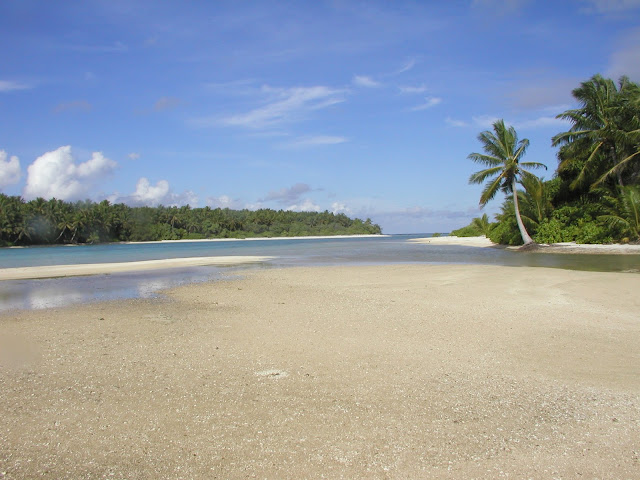 |
| Exploring Enderbury Island |
It is our last day at Kanton and I am up before first light reminiscing about how a Fijian ended up losing herself in the Phoenix Islands. A once in a lifetime opportunity handed to me in my twenties is turning into a lifelong love affair.
 |
| The fabulous 2002 science team |
In 2000 the New England Aquarium led an expedition to discover and describe primal ocean. At the time I was working for the World Wide Fund for Nature in Fiji, and was asked to join to help bridge the gap between science and management in the Pacific. I was not fully trained as a scientist, and unbeknown to anyone I had done eight dives in my entire life. I remember being in complete awe around scientists like Dr. Gregory Stone and Dr. David Obura, listening and learning as much as I could.
That first dive changed my life forever.
 |
| Diving with my coral buddy David Obura |
I still remember the adrenalin rush of the black tip sharks rushing curiously up to the surface to greet us at Nikumaroro Atoll, and then follow us down to the reef, before returning to patrol their reefs. Corals covered the reef creating an intricate matrix of habitat and shelter for fish, undisturbed by mankind. But what really had me gripped is awe was the fish life. Everywhere I looked there were fish of all different colours, shapes and sizes – some moving fast darting around, while others moved gently with the movement of the sea.
 |
| A carpet of Acroporas in Kanton Lagoon |
I realised quickly what I was seeing was an entire coral reef ecosystem intact, in an undisturbed state. The underwater food web was in balance, with the right number of predators, omnivores and herbivores. Endangered CITES (Convention for the International Trade in Endangered Species of Wild Flora and Fauna) like the Napoleon wrasse or vulnerable groupers popular amongst the live reef trade were plentiful.
 |
| Falling in love with the Nikumororo Atoll |
The Phoenix Islands helped me to understand the concepts of shifting baseline, where each human generation accepts a slightly more degraded ecosystem and the “norm.” The current generation—for example in Fiji, living near reefs that are heavily fished—think that the reefs should only have one shark on it, or only small schools of fish. Because that is all they have known in their lifetime.
 |
| Working with Tuake Teema from Kiribati fisheries |
What makes Phoenix Islands special for me as a scientist is that I use the Phoenix Islands to recalibrate – to remind myself what a truly healthy and balanced coral reef looks like. And as I work on conservation issues in my own country of Fiji, the reefs in the Phoenix Islands inspire and are my own baseline of what coral reefs should be if we cared for them a little better.
— Sangeeta





0 comments:
Post a Comment